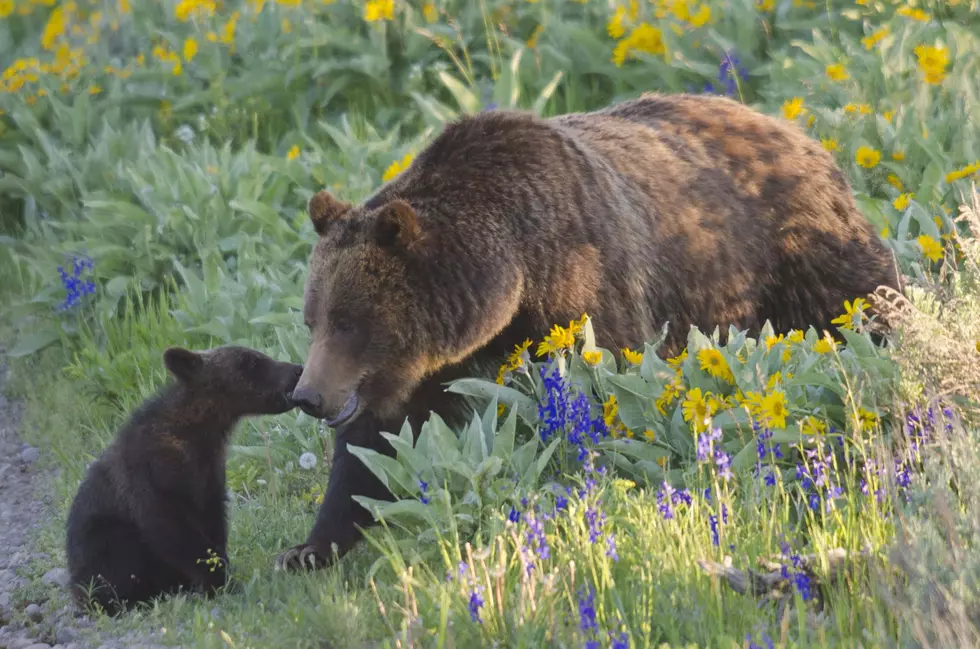
Gov. Gianforte calls for northern grizzly delisting; wildlife advocates oppose
Gov. Greg Gianforte announced on Monday that the state of Montana is petitioning the U.S. Fish and Wildlife Service to delist the grizzly population in the Northern Continental Divide Ecosystem, prompting a quick reaction from bear advocates.
Less than a week after the Northern Continental Divide subcommittee discussed the status of the grizzly population in their recovery area, Montana’s governor said his administration wants the NCDE population delisted. Keeping the population on the Endangered Species list would “only continue to impact communities, farmers and ranchers, and recreationists,” Gianforte said in a release.
We’ve achieved the goals set for us. It’s time for the state to take over management,” Gianforte said.
At last week’s NCDE subcommittee meeting, bear biologists reported the population in the NCDE is estimated at about 1,100 bears. Biologists also reported a somewhat high number of known bear deaths this year but calculated that the deaths weren’t enough to affect the population long-term. The interagency Conservation Plan set a population objective of 800 to 1,000 bears in the recovery area.
At least 10 grizzlies died outside the recovery area, mostly east of the Rocky Mountain Front, where some farmers and ranchers resent the recent appearance of grizzly bears. They call for delisting the grizzly so they can shoot bears that get in conflict with their livestock. Montana Fish, Wildlife & Parks and U.S. Wildlife Services ended up killing four of the 10 bears this year because of livestock depredation.
George Edwards of the Montana Livestock Loss Board said he’s paid ranchers a record high $270,000 for livestock killed by predators statewide.
Bear advocates immediately opposed Gianforte’s petition, mostly based on Montana’s recent enactment of several laws allowing the extensive killing of Montana’s other contentious predator: wolves.
“By asking the U.S. Fish and Wildlife Service to strip away federal protections for grizzlies, Montana’s hostility toward native carnivores knows no bounds. The wolf slaughter that’s happening in Montana right now demonstrates how poorly equipped Montana decision-makers are to decide the fate of these majestic species, whether grizzlies or wolves,” said John Horning, WildEarth Guardians executive director in a release.
Similar efforts to delist the Greater Yellowstone Ecosystem population have failed because of the way the Endangered Species Act works. The U.S. Fish and Wildlife Service doesn’t delist populations piecemeal as they reach target objectives. The agency only delists an entire species or a distinct population segment of a species.
The U.S. Fish and Wildlife Service can’t delist the species because some populations are floundering, including the Cabinet-Yaak and Selkirk populations. When it comes to what is meant by a “distinct population segment,” the law is a little murky, although a population must be “discrete and significant.”
But the Gianforte administration is also asking the U.S. Fish and Wildlife Service to declare the NCDE grizzly population to be a distinct population segment in order that it can be delisted.
"The courts have already ruled that there is only one population of grizzly bears. Governor Gianforte is ignoring the courts' rulings when he petitioned for the grizzly bears in the NCDE to be delisted," said Mike Garrity, Alliance for the Wild Rockies executive director.
But the NCDE population may be in the same situation as the Yellowstone population. Missoula federal judge Dana Christensen found the Yellowstone grizzly population couldn’t be delisted until the U.S. Fish and Wildlife Service addressed a few questions, including how delisting bears in one region would affect those in other areas and how bears are supposed to move between the different areas to guarantee gene flow between populations. Without such gene flow, the separate populations would eventually suffer from inbreeding and other deleterious genetic effects.
Bears need to be able to migrate between the Yellowstone and NCDE regions, while some are trying to make their way to the Bitterroot Ecosystem. The Cabinet-Yaak population – only about 50 bears – have depended on FWP biologists translocating a few NCDE bears each year to keep the population going until bears learn to migrate between the populations on their own. This year, those translocations didn’t happen due to biologists being busy with so many people that are uneducated about bear attractants.
The U.S. Fish and Wildlife Service is currently addressing the requirements of Christensen’s ruling. But now, the agency might end up adding the NCDE to its analysis of possible distinct population segments. The matter will likely be a topic of discussion during Tuesday's Interagency Grizzly Bear Committee executive meeting.
Mike Bader, consultant for the Flathead-Lolo-Bitterroot Citizen Task Force, dismissed Gianforte’s petition as being 100% political.
“It’s 100% unscientific,” Bader said. “(University of Montana geneticist) Fred Allendorf makes a compelling case that the NCDE, the Cabinet-Yaak and the Selkirk and any bears that end up in the Bitterroot are genetically related. So calling the NCDE a distinct population segment, that’s just a political move. And to say that we can trust Fish, Wildlife and Parks to do a good job is a bit of a stretch.”
This isn’t the first time Gianforte has pushed for grizzly delisting. In 2019, as Montana’s Congressman, Gianforte brought then-Interior Secretary David Bernhardt to Montana to ask him to delist the bears in the NCDE. He also backed the 2017 U.S. Fish and Wildlife Service decision to delist the Yellowstone population, along with Sen. Steve Daines. Both politicians have backed various Congressional bills seeking to delist grizzlies.
On Monday, Daines once again bolstered Gianforte’s efforts to delist.
“I fully support and am thankful for Governor Gianforte’s leadership on this issue and implore the Biden Administration to follow the science in reviewing the petition and work with Montana to transition management back to the state,” Daines said in a release.
Contact reporter Laura Lundquist at lundquist@missoulacurrent.com.
